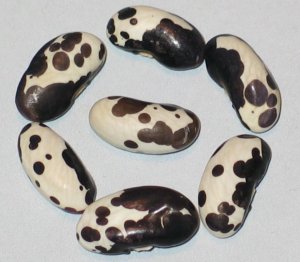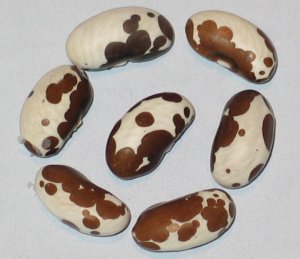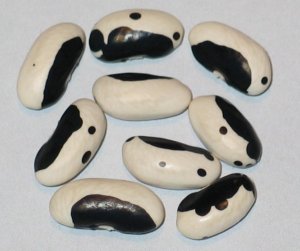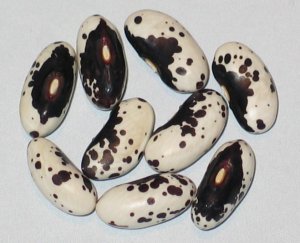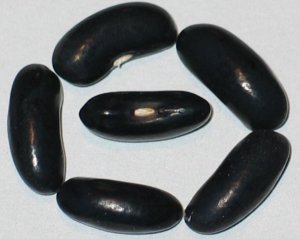aftermidnight
Garden Addicted
- Joined
- Jun 5, 2014
- Messages
- 2,182
- Reaction score
- 4,026
- Points
- 297
- Location
- Vancouver Island B.C. Canada
@Bluejay77 , hard to say who was their source, I got my start from Shirley Bellows who got them straight from Derek Fell and I believe the name should be "Lazy Wife" not Lazy Housewife, this is where the confusion begins, me thinks . I have only given these to a few as you know I don't grow many of any variety in my small garden. I know the Sample Seed Shop is selling them again this year and Remy has a picture showing the difference in the shapes of the true Lazy Wife and the one that has been sold in the past.
. I have only given these to a few as you know I don't grow many of any variety in my small garden. I know the Sample Seed Shop is selling them again this year and Remy has a picture showing the difference in the shapes of the true Lazy Wife and the one that has been sold in the past.
Here's the bit of info I have on them...
"The 'Lazy Wife' bean made a brief appearance in the 1980s through a seed company that quickly ran out of seed and substituted another variety when fulfilling orders. The incorrectly identified variety was propagated and offered to other seed sources, unfortunately, so most (if not all) of the 'Lazy Wife' seed sold today is not the historical variety known for such wonderful flavour.
Seed of the true 'Lazy Wife' is not kidney shaped like most other beans, but almost round and shiny white like polished marble. Another way to distinguish the true 'Lazy Wife' pole bean is the shape of the pod. It is not long and round like a 'Kentucky Wonder' or long and flat like a pole Romano, but rather it is knuckle shaped and up to 51/2 inches long. In other words, the pods are flat but the seeds swell up to stretch the skin out like a knuckle of a clenched fist.
Regardless of it's appearance, what sets the 'Lazy Wife' pole bean apart from other snap beans is it's flavour. Just a few minutes of cooking (or Steaming) renders the pods buttery flavoured, meaty, and delicious. Moreover, the white, marble-like beans make the best baked beans after the pods turn brittle.
Perhaps there are seed savers in the United States who are still propagating the "Lazy Wife' bean in their home gardens without realizing the treasure they have."
From SSE catalog…
Setting the record straight- "Lazy Wife Bean"
It describes the original "Lazy Wife" as having been carried by W. Atlee Burpee starting in 1885, who obtained it from Mennonite immigrants in Pennsylvania who had grown it for generations. Burpee then dropped the variety in the early 1900's.
Somewhere along the line (around 1980) another different strain was circulated by the name of "Lazy Wife". SSE admits that they and other venders sold this inauthentic strain for years.
However, the original Burpee strain has been returned to circulation by Derek Fell, a former Burpee Seed catalog manager. Derek had obtained his seed from Bill Byrd of Carversville Pa, who had grown & saved seed for the original "Lazy Wife" ever since Burpee dropped it from their catalog.
So thanks to a few seed savers this bean is now back in circulation, another bean saved from extinction .
.
Annette
Here's the bit of info I have on them...
"The 'Lazy Wife' bean made a brief appearance in the 1980s through a seed company that quickly ran out of seed and substituted another variety when fulfilling orders. The incorrectly identified variety was propagated and offered to other seed sources, unfortunately, so most (if not all) of the 'Lazy Wife' seed sold today is not the historical variety known for such wonderful flavour.
Seed of the true 'Lazy Wife' is not kidney shaped like most other beans, but almost round and shiny white like polished marble. Another way to distinguish the true 'Lazy Wife' pole bean is the shape of the pod. It is not long and round like a 'Kentucky Wonder' or long and flat like a pole Romano, but rather it is knuckle shaped and up to 51/2 inches long. In other words, the pods are flat but the seeds swell up to stretch the skin out like a knuckle of a clenched fist.
Regardless of it's appearance, what sets the 'Lazy Wife' pole bean apart from other snap beans is it's flavour. Just a few minutes of cooking (or Steaming) renders the pods buttery flavoured, meaty, and delicious. Moreover, the white, marble-like beans make the best baked beans after the pods turn brittle.
Perhaps there are seed savers in the United States who are still propagating the "Lazy Wife' bean in their home gardens without realizing the treasure they have."
From SSE catalog…
Setting the record straight- "Lazy Wife Bean"
It describes the original "Lazy Wife" as having been carried by W. Atlee Burpee starting in 1885, who obtained it from Mennonite immigrants in Pennsylvania who had grown it for generations. Burpee then dropped the variety in the early 1900's.
Somewhere along the line (around 1980) another different strain was circulated by the name of "Lazy Wife". SSE admits that they and other venders sold this inauthentic strain for years.
However, the original Burpee strain has been returned to circulation by Derek Fell, a former Burpee Seed catalog manager. Derek had obtained his seed from Bill Byrd of Carversville Pa, who had grown & saved seed for the original "Lazy Wife" ever since Burpee dropped it from their catalog.
So thanks to a few seed savers this bean is now back in circulation, another bean saved from extinction
Annette

